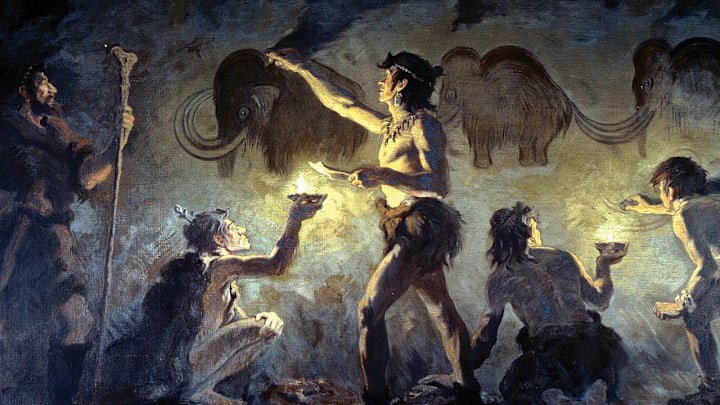The popular concept of a prehistoric person usually involves a thick-browed, long-armed man living in a cave. Human ancestry is a lot more diverse than that, though. Currently, anthropologists recognize more than 20 species of hominins, a taxonomic group that includes modern humans, extinct members of our genus, Homo, and other extinct human species in other genera, like Australopithecus.
Two of these extinct beings—Neanderthals and Cro-Magnon people—are pretty close to us, evolutionarily speaking. But they’re not the same species. Here’s how to tell the difference.
Neanderthal vs. Cro-Magnon Cheat Sheet
Species Name | Era | Range | |
|---|---|---|---|
Neanderthals | Homo neanderthalensis | 400,000 to 40,000 years ago | Europe, Asia |
Cro-Magnons, a.k.a. early modern humans | Homo sapiens | 40,000 to 10,000 years ago | Europe |
Neanderthals: Our Cold-Adapted Cousins
Fossils of this species of prehistoric human ancestor were discovered first in Germany’s Neander Valley in 1856. Neanderthals evolved about 400,000 years ago in southern Europe and western Asia, and were the first human ancestor adapted to a colder climate. They used tools like fire and sharpened rocks, bones, and sticks. Neanderthals were more muscular than the later Homo sapiens, and their skulls were flatter, with broad noses and pronounced brow ridges.
Yes, they lived in caves—but they’re not the simplistic “cavemen” we’ve made them out to be. In recent years, scientists have discovered that Neanderthals fashioned jewelry and musical instruments, buried their dead with funerary rituals, cared for community members with disabilities, and interbred with Homo sapiens. They were also capable of speech.
Despite their similarities to us, Neanderthals were not—repeat, not—our direct ancestors. They were an offshoot of an earlier common ancestor, and they eventually lost out to their smarter, more advanced cousins: European early modern humans, a.k.a. Cro-Magnons.
Cro-Magnons: They’re Just Like Us
Cro-Magnons are a prehistoric version of us. They’re the earliest known European example of our species, Homo sapiens, and lived between 35,000 and 10,000 years ago. They were modern in every anatomical respect, but did have somewhat broader faces, a bit more muscle, and a slightly larger brain that humans today. Cro-Magnon people used their brig brains to make tools, speak and sing, create weapons, built huts, make clothing and jewelry, and paint on cave walls. Fossils of early modern humans have since been found outside Europe, including in the Middle East.
Why Cro-Magnon? In 1868, a paleontologist named Louis Lartet investigated ancient human skeletons in the Cro-Magnon rock shelter in France. They turned out to be the oldest fossils of anatomically modern humans then known, and were named after the place they were found. (Technically, their name is pronounced the French way, “cro man-YON.”)
Populations of Neanderthals and Cro-Magnon people overlapped in Europe for a few thousand years. They did interbreed, which left traces of Neanderthal DNA in our genome.
Discover More Amazing Facts About Human Origins:
A version of this story was published in 2013; it has been updated for 2024.
